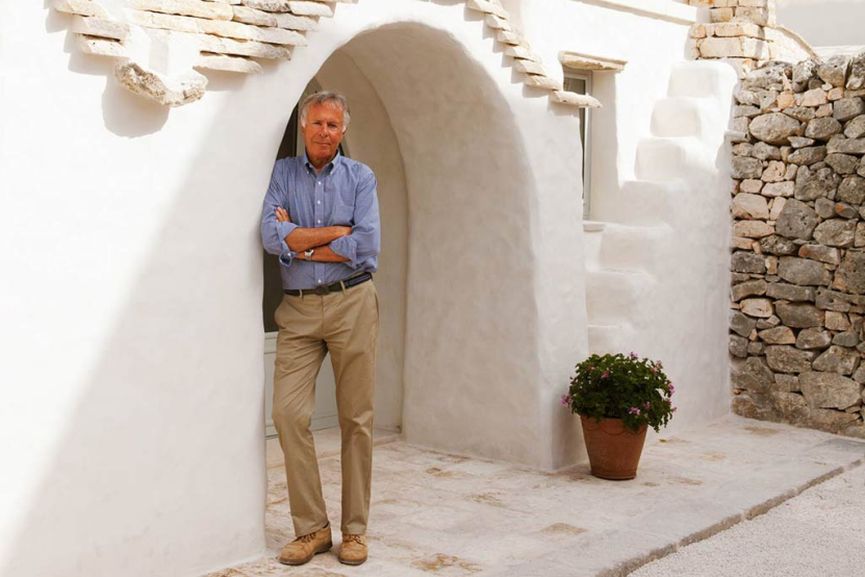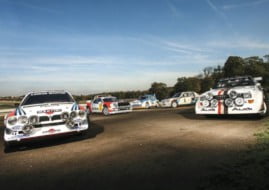Cesare Fiorio – a managing power behind Lancia's historic success
In the world of motorsports, the championship winning drivers and the championship winning cars almost always get the most of the attention. But behind all those front-page stories there are always men and women who also deserve admiration and respect. The thing is, without them, these successes would not be possible. One of those men is Cesare Fiorio, one of the most successful team managers in rallying history. This Italian created miracles with Lancia rally team and converted the Italian brand into the most iconic name in a rallying history.
The man behind the ultra successful Lancia rally cars
Under the guidance of Cesare Fiorio, Lancia Stratos HF and Lancia Delta Integrale became the legendary models that earned nine manufacturers’ titles and five drivers’ titles in the WRC, driven by great names like Sandro Munari, Juha Kankkunen and Miki Biasion. Apart from those two famous rally cars, there were the stunning Group B models Lancia Rally 037 and Lancia Delta S4, almost as legendary as those mentioned before. The 037 model even won one manufacturer’s title. In total, between 1974 and 1992 Lancia won ten manufacturer’s titles and Lancia’s drivers took five world titles. Impressive, isn’t it?
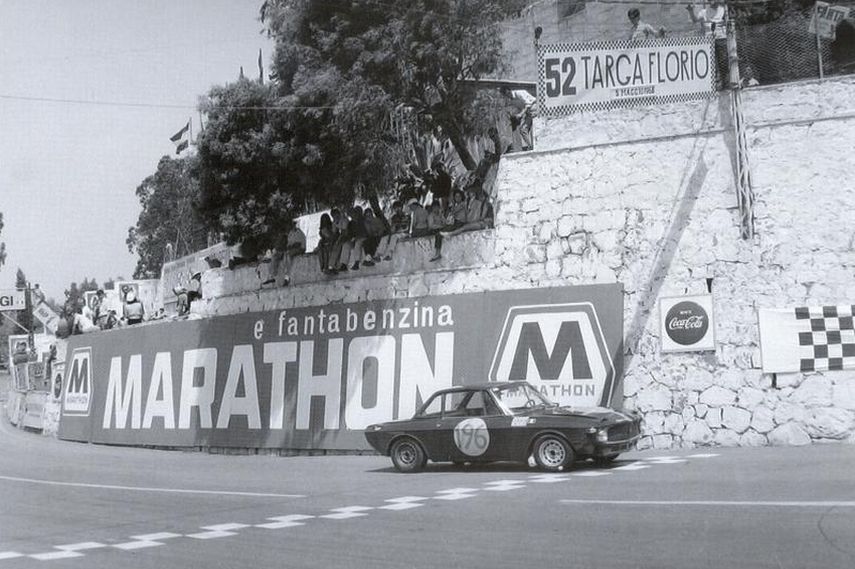
Cesare Fiorio racing with Fulvia at 1968 Targa Florio
Cesare’s had short but successful racing career
The story about Cesare Fiorio and Lancia began much before Lancia’s first world title, in fact, it began with Cesare’s birth, on May 26th, 1939, in Turin. Cesare’s life and career were determined a lot by his father Sandro, who worked as a chief of the public relations department in Lancia.
Cesare had a short racing career, with notable success in the 1961 Italian GT Championship. He was driving the Lancia Appia Zagato and he even managed to win the 1150cc class. He was also driving the Lancia Flaminia Zagato in few other races, including 1962 Targa Florio. In his record, there’s also one attempt at Rallye Monte-Carlo, in which he finished with retirement.
HF Squadra Corse was established in 1963
In 1963, after his obligatory military service in the Italian navy, Cesare established the HF Squadra Corse. This was a racing and rally team based on the Lancia Owners Club, with a support from the factory. They were preparing a racing version of the Lancia Flavia. After the initial successes at national rallies, Fiorio managed to get more help from Lancia and this semi-works team became successful in the international rallies.
In 1966, team’s drivers started to compete with Lancia Fulvias. More notable results followed on the world’ scene, such as Sandro Munari’s victory at 1967 Tour de Corse or Ove Andersson‘s victory at 1967 Rallye de Espana.
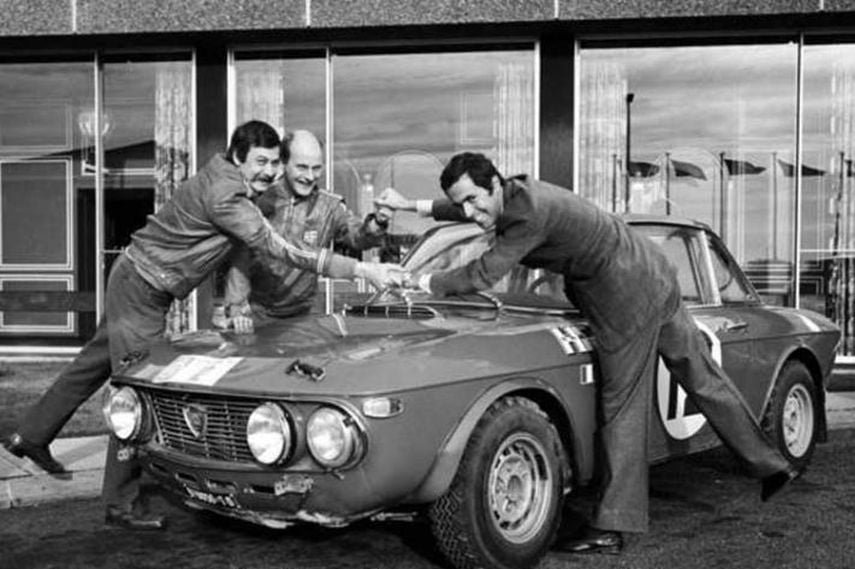
Cesare led HF Squadra Corse’s driver Harry Kallstrom to the 1969 European Rally Championship title
Lancia’s driver took the 1969 European Rally Championship
In 1969, the HF Squadra Corse was moved to the Lancia’s factory to become the official motorsport department of the Italian manufacturer. The Swedish driver Harry Kallstrom took the 1969 European Rally Championship title, with three wins and three more podiums. The victorious cars were two versions of Lancia Fulvia Coupe HF, one with 1.3-litre engine and another with 1.6-litre engine.
First championship title for Lancia in 1972
The Fiat Group became the owner of Lancia in 1969, but that didn’t affect Fiorio’s management of the Lancia’s rallying program. Sandro Munari was HF Squadra Corse’s leading driver. After he took the second place in the 1971 European Rally Championship, the milestone success followed in January 1972. Munari won the Rallye Monte-Carlo with Fulvia 1.6 Coupe HF.
The other drivers were Simo Lampinen, Harry Kallstrom and Amilcare Ballestrieri. With two more wins at Morocco and Sanremo they won the 1972 International Championship for Manufacturers. It was the last season of the ICM, a year later, in 1973, the World Rally Championship was inaugurated.
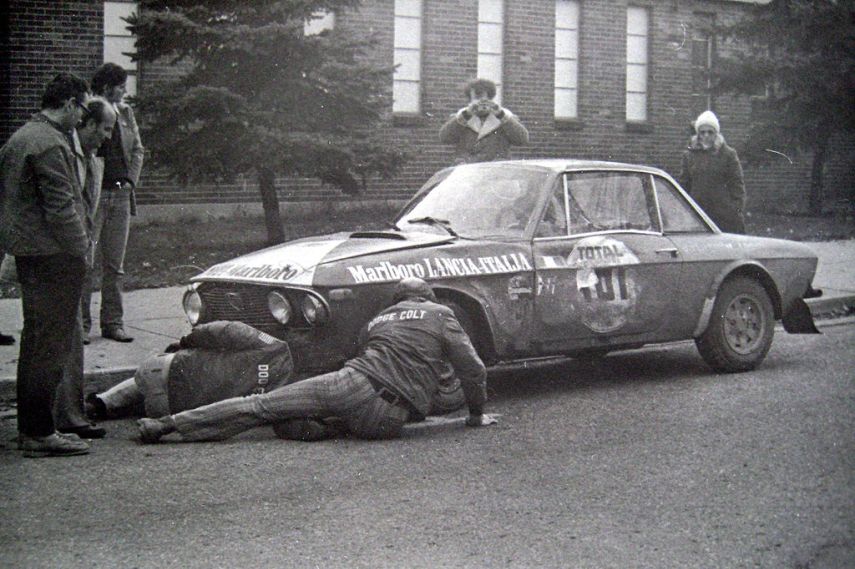
In 1972, Lancia won the International Championship for Manufacturers
Lancia Stratos HF with Ferrari’s engine was an ultimate rally car
Lancia has won the ICM title ahead of Fiat, so Cesare Fiorio had a good argument to ask the bosses in the Fiat Group to make something unusual. The new rally car Stratos HF was created. The defining thing, not just for Lancia but for the future of the rallying, was the new engine. Stratos had a V6 engine from Ferrari Dino 246GT.
In one interview Fiorio stated “I managed to convince Enzo Ferrari to give me his engine. It was the first big victory of my life. It was not at all easy to convince him to give an engine to anyone, let alone for a rally car.”
The Lancia Stratos HF debuted in the second part of 1972, but the first notable results became in 1973. Combining both the old Fulvia and new Stratos, Sandro Munari won the 1973 European Rally Championship title for Lancia Marlboro.

Fiorio stands near Munari’s Lancia Stratos at 1974 Rallye Sanremo
First WRC title in 1974
In the 1974 WRC season, which featured eight events, Stratos HF was the victorious car at three events. Munari was the winner at Rallye Sanremo and Canadian Rally Rideau Lakes while Jean-Claude Andruet has won the Tour de Corse. Lancia took its first title.
Triple victory in Monaco
In the following two years Lancia clinched two more WRC titles. Despite struggling with reliability, the Stratos HF continued its dominance to win four rallies in 1975 and four rallies in 1976. The drivers were Sandro Munari, Bjorn Waldegard and Bernard Darniche. The highlight of the Lancia’s dominance was the 1-2-3 victory at 1976 Rallye Monte-Carlo.
Due to internal politics inside the Fiat Group, the focus in 1977 was on Fiat and 131 Abarth rally car, which took the world’s title. Lancia finished in the fifth place, with just one WRC victory for Sandro Munari at season-opening Rallye Monte-Carlo. In 1978, the only team’s victory was Markku Alen‘s first place at Rally Sanremo.
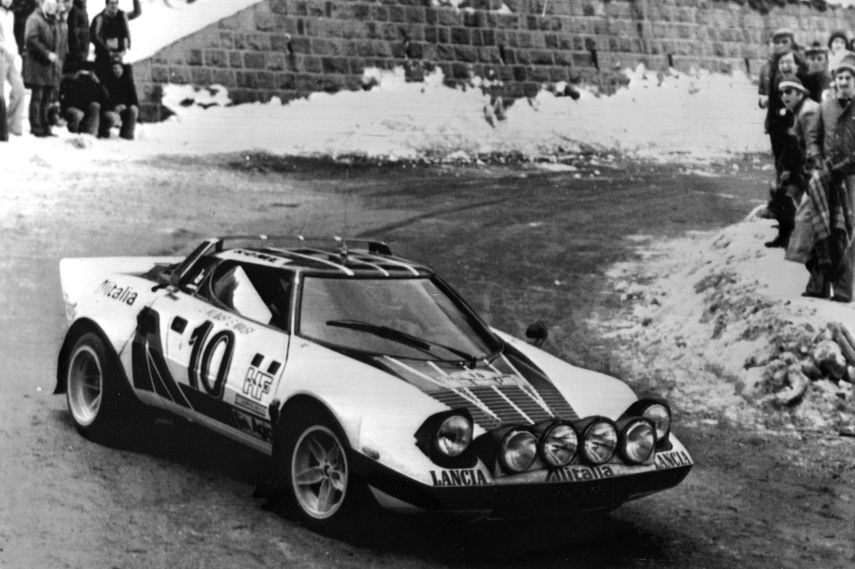
At 1976 Rallye Monte-Carlo Lancia achieved triple victory
Fiorio tranfered his successful management into the sportscar championship
In 1979, Cesare Fiorio left the rallying and switched to sportscar racing, to lead the Lancia in the FIA World Sportscar Championship. Prior to that, he had to develope a proper car. The company ordered that he must use a car from the Beta range. The Beta Montecarlo with 1.4-litre turbo engine is maybe not looking as a successful GT racer, but Florio and his team of engineers and designers created the Group 5 car which became victorious in its debut season.
Victorious combination of experienced drivers
Fiorio decided to use a combination of experienced circuit and rally drivers, so he hired Riccardo Patrese, Walter Röhrl and Markku Alen. In the 1979 WSC season, Lancia Beta Montecarlo earned the manufacturer’s title in the Under 2-litre division.
In the 1980 season, Lancia again fielded a group of renown F1 and rally drivers in its WSC campaign, so Röhrl, Alen and Patrese were partnered by Eddie Cheever, Michele Alboreto and Piercarlo Ghinzani. The class victory repeated in 1980, but Lancia was also awarded the overall title after they finished the championship with the same amount of points as Porsche. The similar situation repeated in 1981 and Lancia again won the Endurance Championship title.
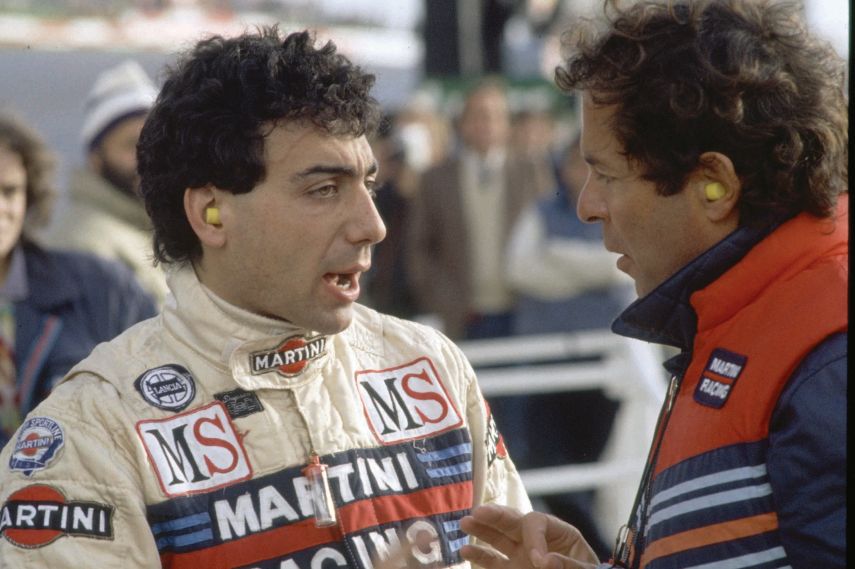
Cesare Fiorio with Michele Alboreto, one of Lancia’s drivers in the World Sportscar Championship
Audi Quattro ruled, Fiorio also wanted 4WD car
In 1982, Martini Lancia introduced the LC1 prototype and continued to win the races. On the other side, Cesare Fiorio focused again on the rallying. In the meantime, the Audi Quattro appeared as the first 4WD rally car. Fiorio also wanted a 4WD car to compete against 1982 championship winning Audi and he ordered work to start on the evaluation of a Delta chassis with 4WD and powered by an Abarth 131 engine.
Lancia Rally 037 was the last RWD championship-winning car
It became clear there was no time to finish the project, so the new solution was the Lancia Rally 037, a supercharged, mid-engined, two-wheel drive car based on the Beta Montecarlo monocoque. The new car won the 1983 manufacturer’s championship against Audi Quattro, in a narrow finish with just two points advantage. Both Audi and Lancia won five events. The Lancia main drivers were Walter Röhrl and Markku Alen but there was also Attilio Bettega in three races.
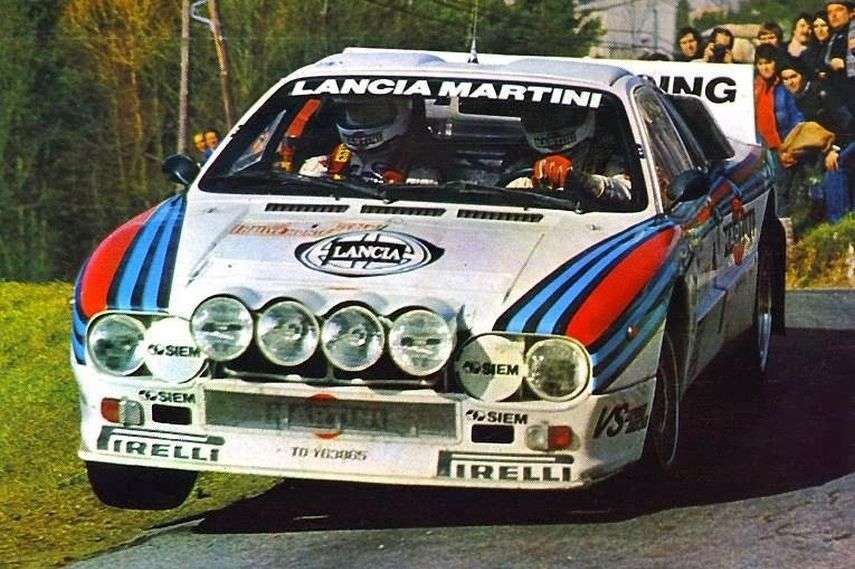
In 1983, Lancia took its first WRC manufacturer’s title
Lancia Delta S4 was a deadly monster-car
In 1984, the rear-wheel drive Lancia wasn’t competitive enough and Audi dominated in the championship, winning both manufacturer’s and driver’s titles. The pressure was on Lancia, in a fact on Cesare Fiorio. His response was the creation of the Delta S4 Group B car. In the 500-hp beast, Henri Toivonen won the last rally of 1985 (RAC Rally) and Lancia won four events in 1986, but both titles went to Peugeot.
Unfortunately, the Group B years was marked by fatal accidents both in 1985 and 1986, both with Lancia cars. In May 1985, Attilio Bettega was killed in Lancia Rally 037 at Tour de Corse. A year later, Henri Toivonen and co-driver Sergio Cresto lost their lives at 1986 Tour de Corse in the Lancia Delta S4.
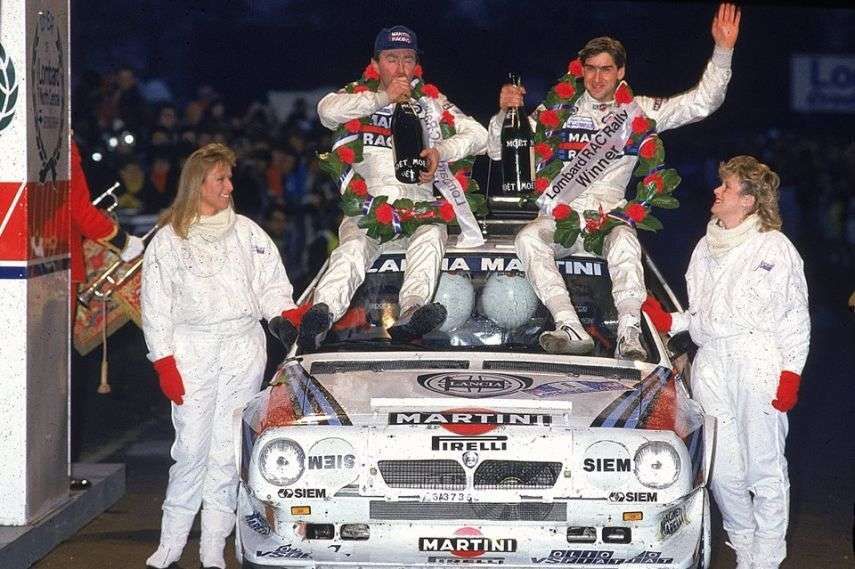
Toivonen are celebrating his first win with Lancia Delta S4 at 1985 RAC Rally. Next year, he died in that car
Successful recovery after the Group B was banned
Those three deaths determined not only the future of Lancia but also the future of rallying in general. The Group B was banned and Lancia lost both of their cars. And then Cesare Fiorio managed the amazing recovery. He pulled out from the drawer the project of Lancia Delta 4WD car and motivated his engineers to finish the new car under the Group A rules within six months.
The car was ready for the beginning of 1987 season. The first victory was scored at the first event, at Rallye Monte-Carlo. Miki Biasion won the event, his teammate Juha Kankkunen finished second. Lancia won the manufacturer’s title, Kankkunen was the driver’s champion.
Six consecutive titles for Lancia Delta Integrale
Then the historic winning streak of six consecutive titles followed. The Martini Lancia team, under the guidance of Cesare Fiorio, was the dominant force at the rallying scene. The team won all manufacturer’s titles from 1987 to 1992, even without Fiorio in the manager’s chair, because he was appointed to some other duties inside the Fiat Group.
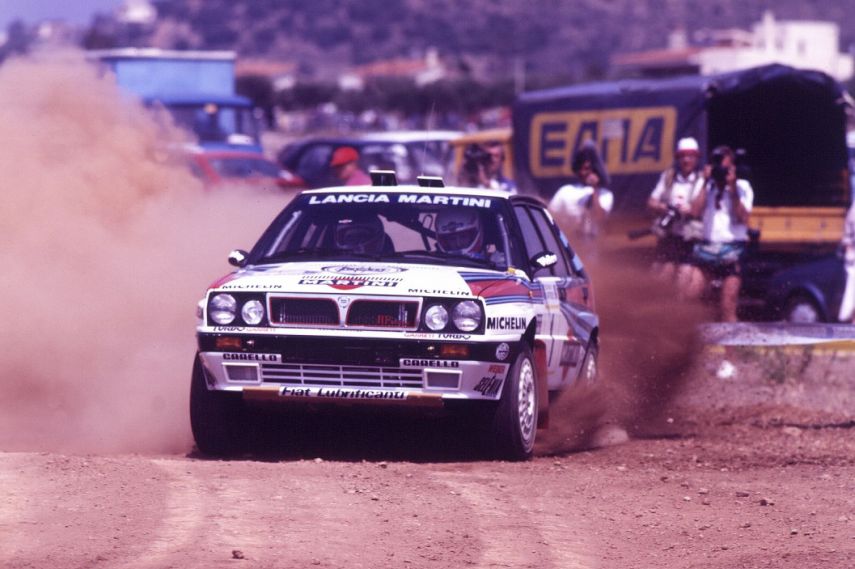
Miki Biasion was the double world champion with Lancia
Fiorio took over Ferrari F1 squad
In 1988, he was in charge of the Alfa Romeo racing department but the biggest change followed in 1989 when Fiorio was called to join Ferrari’s Formula 1 team. He gets a position of managing director of Scuderia Ferrari and his task was to revive the team after few disappointing season in the mid-1980s.
The team switched to the V12 engine for the first time since 1980 and Nigel Mansell replaced Michele Alboreto. This combination of new car and a new driver was victorious at the season-opening Brazilian Grand Prix, where Nigel Mansell scored his first of two season’s victory. The second was achieved at Hungarian Grand Prix. Mansell’s teammate Gerhard Berger added one more win at Portuguese Grand Prix. In the championship dominated by McLaren-Honda, Scuderia Ferrari took third place.

1980 Formula One season: Nigel Mansell, Cesare Fiorio and Alain Prost
A conflict ended a relationship with Ferrari
In 1990, Fiorio hired Alain Prost as Mansell’s teammate and led the team to the second place finish, with six victories in 16 races. Alain Prost lost the title from Ayrton Senna after the legendary crash at the penultimate race of the season in Japan. In 1991, Fiorio was leading the team in four races and he left the Scuderia Ferrari after Monaco Grand Prix in May, after a conflict with one member of senior management.
In the two and a half seasons of his management, he fulfilled his task and Ferrari improved their performance, winning nine races and taking 27 podiums. Ferrari had to wait eight years to equalize their score of six wins from 1990.
Fiorio broke the Trans-Atlantic record
Fiorio had no racing team to return, as Lancia racing department was ready for closure in 1992, so he switched his focus to power boats racing. It was his another sporting love and he was very successful during the 1970s and 1980s, winning European and World titles. He had a new challenge, to win the Blue Riband for the fastest Trans-Atlantic crossing. He was challenged by Fiat’s Gianni Agnelli and he succeed with a boat called Destriero. In August 1992, he traveled two days, 10 hours and 34 minutes to reach the British coast from New York. The record still stands.
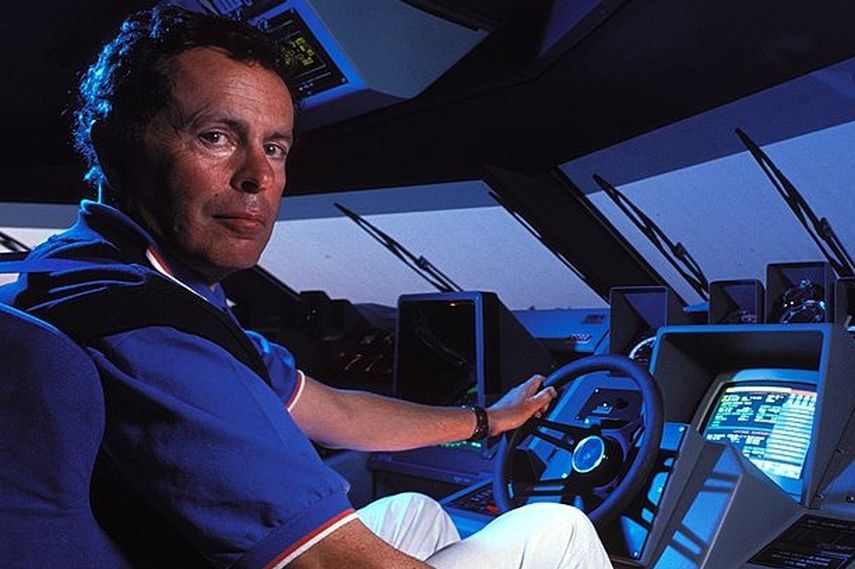
In 1992, Cesare Fiorio broke the record with the fastest crossing of the Atlantic
Short cooperation with Flavio Briatore
In July 1994, Cesare returned to Formula 1. He was offered to become the team manager of Ligier which Flavio Briatore had just bought. He didn’t stay with the team for long because Tom Walkinshaw took over the team in 1995 and Fiorio was released of his duty.
In 1996, Fiorio was shortly involved with Forti team but then he returned to Ligier, which was under the new owner Alain Prost and renamed to Prost F1 team for 1997. Fiorio remained with Prost’s team until the end of the 1998 season. Fiorio then joined Minardi as a sporting director and remained with the team for one and a half seasons. He resigned in the middle of 2000 after a disagreement with team owner Gabriele Rumi.
Cesare Fiorio is an Italian knight
It was Fiorio’s last job in the sporting management, in which he reached the top of the world. For his achievements, he was appointed a Cavaliere della Republica Italiana, the equivalent of the knighthood. In recent years, he puts his experience on the disposal of the Italian TV station RAI as a consultant and TV commentator.
After Sandro and Cesare, the next generation of Fiorio was also involved with Lancia. Cesare’s son Alessandro Alex Florio competed in the WRC, mostly with Lancia. He was the world vice-champion in 1989, driving the Lancia Delta Integrale for Jolly Club, which was in fact Lancia’s B-team.
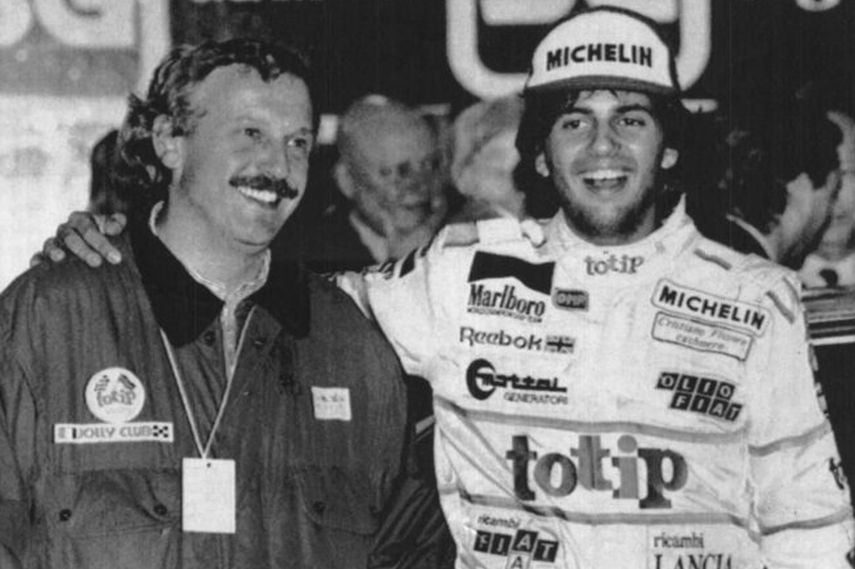
Cesare Fiorio and Alex Fiorio in 1989
Photos: ewrc.cz, McKlein, Getty Images, juwra.com, italiantestdriver.com, jalopnik.com


